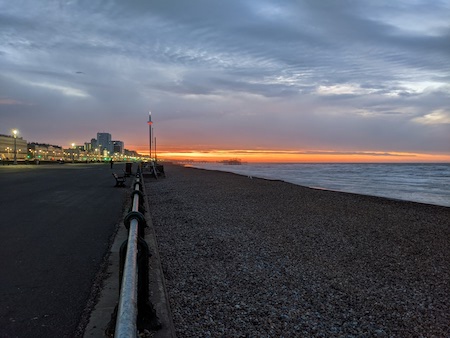Phil: What would you do if you were stuck in one place and every day was exactly the same, and nothing that you did mattered?
Ralph: That about sums it up for me.
Today is March 371st 2020, and day 355 of my personal lockdown. I’m watching movies today, and the first was Groundhog Day.
Groundhog Day has been described as the perfect lockdown movie, since every day is the same. That comparison only holds so far. While Phil Connors lives the same day again and again, there are distinct events in the day and his life is slowly changing within the repetition. And, you know, the film is based around a large social event with no distancing.
Over the last twenty-odd years since I first saw it, I’ve thought about Groundhog Day a lot, but rarely re-watched it (the film turned up most recently in an episode of Imaginary Advice). There are a lot of details I’d forgotten, including that the film has two car chases.
Spoilers follow for a 28-year old movie.
Statistics:
- Length of first iteration: 11 minutes
- Length of second iteration: 7 minutes
- Reset point: sleep or death
- Fidelity of loop: Day repeats with little degradation
- Exit from the loop: spending the night with the main female character / becoming a better person
The film is from 1993, and parts have dated in 28 years. Phil’s hostility and workplace sexual harassment doesn’t come off as a quirky character traits now. I also wondered what happened to make him so invested in his own misery. Fortunately, given the way Netflix and Amazon are reusing old intellectual property, the Groundhog Day prequel TV show can’t be far off.
There’s also something a little unbalanced in Phil’s relationship with Rita, played by Andie MacDowell. The film focusses on their relationship and not the other things that Murray does with his repeated day (one DVD commentary says that Phil spends ten thousand years in Punxsutawney, usual estimates are about 20-40 years, although we only see 37 days in the film). Does Phil know this is the aim of the loop, or has he just tried everything else he can think of? Also, it’s a good thing Phil was not stuck in the loop until the movie passed the Bechdel test or it would still be going on.
Rita is treated as a prize to be won in the film, with Phil as the ultimate stalker. While the movie ultimately has Phil becoming a good person, the movie uses the trope of men deceiving women into falling in love, with the female character having little agency. In one iteration, Rita is horrified to realise “This whole day has been one long set up”, but the film is lamp-shading that issue rather than dealing with it. There’s definitely something a little uneasy about the film from her point of view (which someone has compiled on Vimeo)
When he emerges from the cycle, Phil remembers what he has been through. But how does Rita deal with him after that point, when he does not have years to set-up a perfect day? Will he ever tell her what happened? Will he stay a better person?
And surely Phil’s experiences within the loop have left him scarred in some way. There are some touching scenes where Phil’s mental health collapses, as he tries to deal with his situation. It’s painful to see the scenes where Phil breaks down and begs Rita for help. There is a shocking sequence where Phil repeatedly kills himself, which is (thankfully) played lightly.
A detail that puzzled me was the piano teacher. There’s a section fo the film where Phil decides to learn piano. He goes to a piano teacher and pays her $1,000 dollars to kick out her current student and teach him instead. It’s a scene played for laughs, but you wonder how many people’s lives are touched by Phil’s strange behaviour in this one day where the world revolves around him. Some of them will be left with very odd anecdotes.
Phil continues learning piano until he is an expert –
(This raises the question of how Phil manages to learn within the loop when his brain is being reset at the start of each cycle. I guess this is probably the sort of nit-picking metaphysics best cut in favour of jokes).
(At one point, Rita says she has deja-vu in one of the loops – does this mean there was a chance of her learning what has been happening?)
Anyway, Phil continues learning piano until he is an expert, returning to the piano teacher each day, presumably paying her $1,000 dollars for each step of tuition until he is a jazz virtuoso. On the final day, when Phil uses his piano skills to help him ‘win’ Rita, the tutor turns to Rita and proudly says “That’s my student.” How does she know? On that final day, he was an expert who came for a quick top-up lesson – or else, she is the only person in the film to remember previous cycles.
Another weird diversion is when Phil, on camera, describes the Groundhog Day ceremony as the town “worshipping a rat”. I hope we one day all get to watch a folk-horror version of Groundhog Day.
Groundhog Day is a well-made film whose flaws have become more obvious over time. But it was fun to watch again, and I did like the film’s message. Phil only ‘won’ Rita when he built a community in the town, and she saw how much they loved him.

